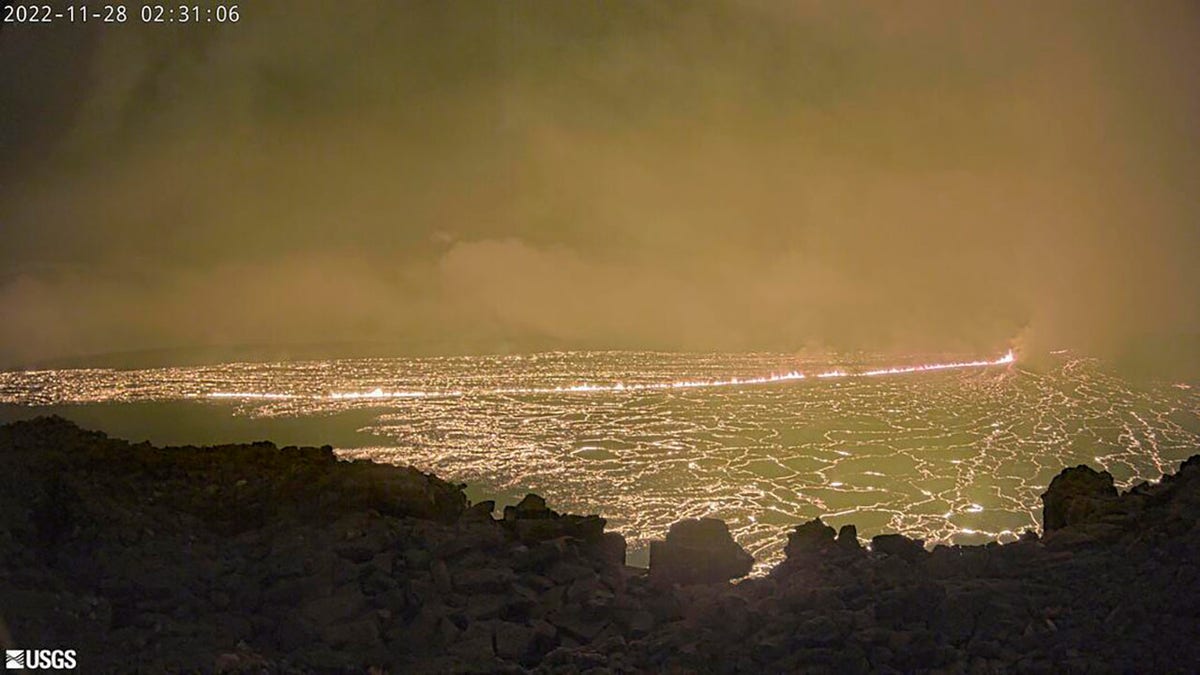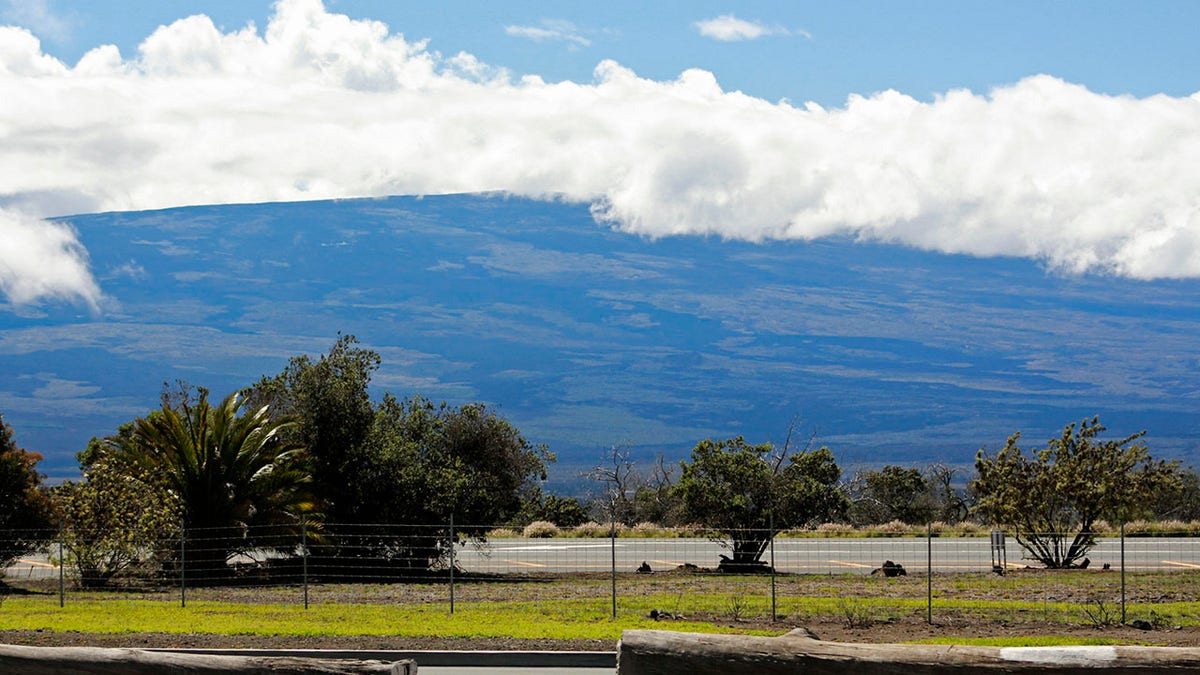Mauna Loa eruption begins in Hawai‘i Volcanoes National Park
Bystander video shows the beginning of the Mauna Loa eruption on Hawaii's Big Island.
The world’s largest active volcano, Hawaii’s Mauna Loa, has started to erupt for the first time in nearly four decades, prompting volcanic ash and debris to fall nearby, authorities said Monday.
The eruption began at approximately 11:30 p.m. Sunday in Moku‘āweoweo, the summit caldera of the Mauna Loa volcano, inside Hawai‘i Volcanoes National Park on the Big Island.
As of 2:43 a.m. local time, "the eruption continues at the summit of Mauna Loa," according to the latest Hawaiian Volcano Observatory Status Report from the U.S. Geological Survey (USGS). "All vents remain restricted to the summit area," the report said. "However, lava flows in the summit region are visible from Kona. There is currently no indication of any migration of the eruption into a rift zone."
A rift zone is where the mountain is splitting apart, the rock is cracked and relatively weak and is easier for magma to emerge, according to the Associated Press.
"The Volcano Alert Level and Aviation Color Code for Mauna Loa remains at WARNING/RED," the update added. "HVO is continuing to monitor conditions carefully and will issue additional notices as needed."
The USGS warned that residents at risk from Mauna Loa lava flows should review their eruption preparations. Scientists had been on alert because of a recent spike in earthquakes at the summit of the volcano, which last erupted in 1984.
Portions of the Big Island were under an ashfall advisory issued by the National Weather Service in Honolulu, which said up to a quarter-inch of ash could accumulate in some areas.

This image shows a view from a research camera on the north rim of the summit caldera of the Mauna Loa volcano, Nov. 28, 2022. (USGS Hawaiian Volcano Observatory via AP)
Mauna Loa is one of five volcanoes that together make up the Big Island of Hawaii, which is the southernmost island in the Hawaiian archipelago.

Mauna Loa is seen from the Gilbert Kahele Recreation Area on the Big Island of Hawaii on Oct. 27, 2022. (AP Photo/Megan Moseley)
Mauna Loa, rising 13,679 feet above sea level, is the much larger neighbor to Kilauea volcano, which erupted in a residential neighborhood and destroyed 700 homes in 2018. Some of its slopes are much steeper than Kilauea’s so when it erupts, its lava can flow much faster.
During a 1950 eruption, the mountain’s lava traveled 15 miles to the ocean in less than three hours.
Mauna Loa last erupted for 20 days between March and April 1984. That means the new eruption that started Sunday night ended the volcano’s longest quiet period in recorded history.
"Based on past events, the early stages of a Mauna Loa eruption can be very dynamic and the location and advance of lava flows can change rapidly," the USGS said Sunday night. "If the eruption remains in Moku‘āweoweo, lava flows will most likely be confined within the caldera walls. However, if the eruptive vents migrate outside its walls, lava flows may move rapidly downslope."
The Associated Press contributed to this report.



